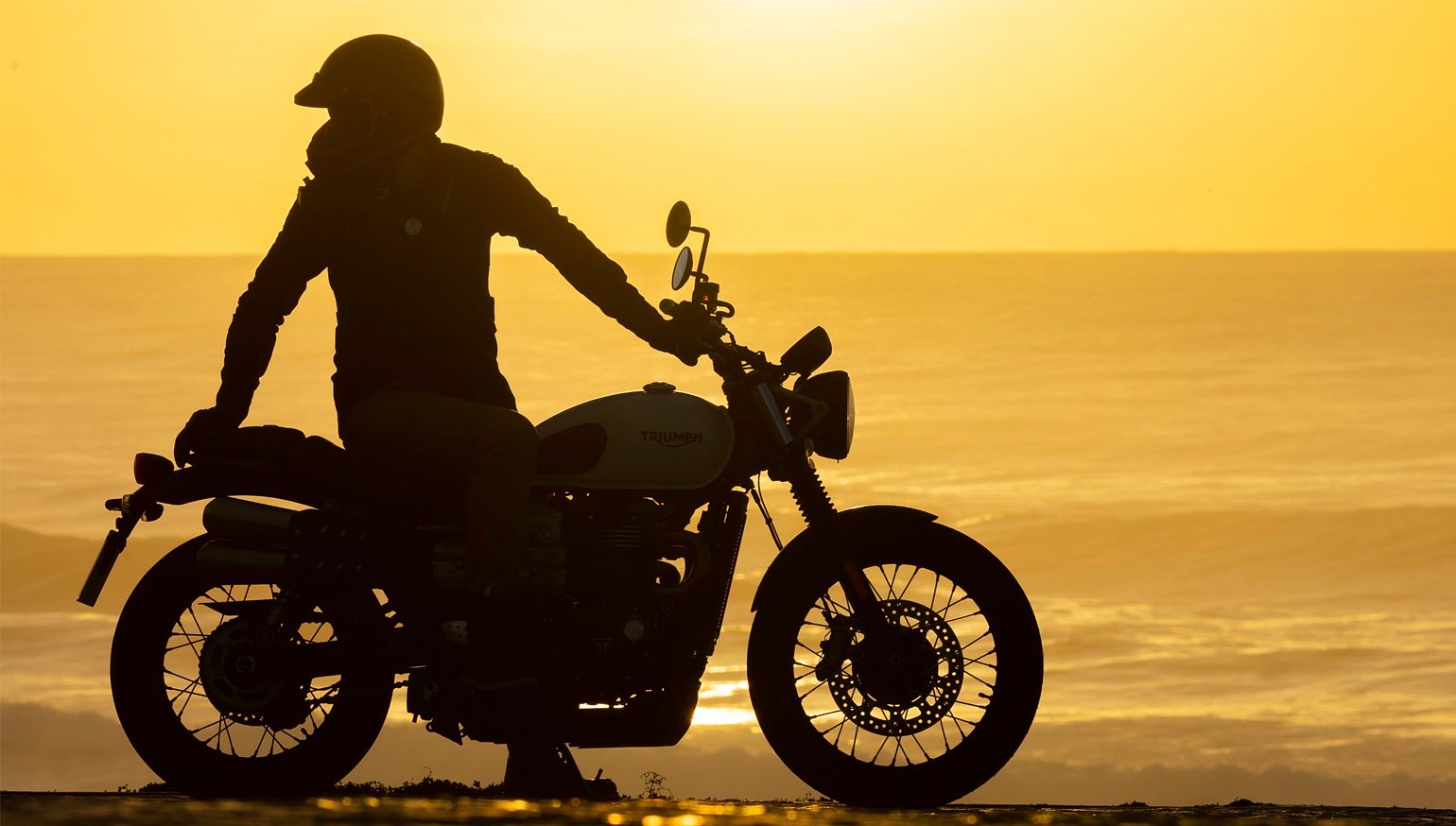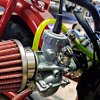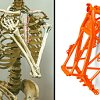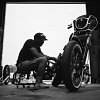Both internationally acclaimed manufacturers and ambitious start-ups have explored the possibilities of motorcycles with fully electric powertrains, promising a cleaner, quieter, and more efficient ride with less maintenance. Yet most riders continue to gravitate toward motorcycles powered by internal-combustion engines.
The question is: Why do so many riders continue to prefer the hum, burble, roar, or scream of combustion over the whirr of electric?
I don't believe it's as simple as saying fully electrified machines don't offer enough range or the recharging and repair infrastructure can't support mass adoption of the technology. Perhaps there's something intrinsically deeper and more emotionally evocative in the relationship between a rider and a piston-powered motorcycle. I believe there's a connection, a feeling, an intangible life force electric bikes simply aren't able to replicate.
After much time spent spinning wrenches in the garage, I've concluded that we find this intangible life force in combustion-powered motorcycles because they are made in the image of ourselves. Consider a few similarities we share with our two-wheeled companions.
Seeking a pulse
From the time we're in utero, our health providers eagerly search for the distinct pitter-patter of a fully functioning and healthy heart. Our heart is singularly responsible for dispersing the life-giving resources our other organs need to survive. Though not a perfect comparison, the fueling system on a combustion engine serves a similar purpose.

In particular, carburetors are an apt analogy for the human heart. Their chambers, jets, passages, and breather hoses loosely resemble the general structure of a heart. And like people who are slow to wake up and groggy in the mornings, a cold-blooded, carbureted bike needs time to warm up before peak performance can be attained. In contrast, modern fuel injection systems are more akin to the heart of a well muscled athlete, working immediately and efficiently with precise calibration.
Lifeblood
It's common to use the term "lifeblood" to express the importance of a substance. Though blood and motor oil don't serve the same purpose in their respective systems, both fluids are circulated and replaced at regular intervals to keep the entity functioning properly.
The heart pumps blood through our circulatory system, just as oil is circulated through the engine and transmission through a series of passages and orifices. Blood is vital to sustaining biological life, and motor oil is equally essential for the health of a combustion engine. In both the human and mechanical system, a blockage that prevents circulation can quickly cause serious damage or total failure.
A breath of fresh air
Both humans and ICE machines are gifted life through the air we breathe. Without enough oxygen, both rider and motorcycle would choke in exasperation until they succumb to the throes of suffocation.
The respiratory systems of both entities share some similarities. For instance, the intake manifold on a motorcycle can be likened to the esophagus of a person, both of which funnel air to a larger chamber. Once there, lungs and air filters remove undesirable particulates before they can intrude deeper into the body. A tear in the air filter and an abscess or contusion in the lungs both result in the same end result — poor performance. Both human and motorcycle operate best when large volumes of clean oxygen can be taken in and distributed.
Soul food
Whether it's a five-course meal at a MICHELIN-recognized restaurant or a questionable gas station snack selection, we all have to eat. When our stomachs empty and energy reserves dwindle, we start to fatigue. In extreme conditions we may completely stall and collapse. The same can be said for our bikes.
Just as our bodies require food to sustain life, combustion engines require gasoline. Much like the food we consume to fuel our bodies, motorcycles have varying diet requirements. Some are picky and require high octane race fuel whereas others are content to run on standard octane ethanol-gasoline blends.
Our bodies convert food into ATP for physical exertion, and combustion engines convert the chemical potential of fuel into physical motion. No matter how you look at it, both man and machine need refueling at regular intervals. In fact, it's nearly ritualistic the way we motorcyclists top off our tanks, both literal and metaphorical, at each pit stop. As it goes, we break bread together, or we break down together.
Feel the pump
Almost all internal-combustion motorcycle engines ever built have one thing in common: one or more pistons. The pumping action of a motorcycle's pistons can be compared to the pumping of human legs when we walk or ride a bicycle. The pistons move up and down, generating the power that drives the machine forward, just as our legs propel us forward when we move. Whether it's the steady cadence of a slow cruise or the rapid, powerful strides of an all-out sprint, the synchronization of these motions provides the rhythm of the ride. The mechanical pumping of the engine is, in a way, a mirror image of the biological pumping of our muscles.
Supporting infrastructure
But it's not simply a succession of muscle contractions and relaxation that powers our movements. Tendons, ligaments, bones, and joints provide the structure that enables our muscles to establish a synchrony of motion.

Likewise, there's much more to driving a motorcycle forward than simply mounting a pulsing piston to the rear wheel. A frame provides the bones of the motorcycle and an array of assemblies, such as timing chains, tensioners, gears, belts, drive chains, and more keep the mechanical components working in harmony to transfer the engine's energy and translate it into motion.
Performance predispositions
Each person's body structure is predisposed to perform better in certain performance metrics than others. An individual with natural grace and a svelte figure will find it easier to succeed in ballet than someone with a robust, stocky figure. Conversely, the person with a thick-boned, stout frame is more likely to achieve better results as a bodybuilder. Whatever the case, it can be argued that each individual is more likely to find greater success and happiness by accentuating and leveraging their God-given features and talents.
In motorcycles, the lighter weight, torquier response, and spaced power pulses of a single-cylinder engine makes it better suited to riding in the dirt. At the other end of the spectrum, a rev-happy V-four provides the best peak horsepower and weight distribution in a grand prix race bike for sprinting from apex to apex on a paved course. Like the human finding joy by leveraging strengths, it's important to select the type of powerplant that best lends itself to the intended riding style and environment.
Thermal regulation
With vigorous exertion comes heat, and the need to regulate it. People accomplish this primarily by sweating. The evaporation of sweat from our skin results in a cooling effect to help us regulate and maintain a proper body temperature. A gentle breeze can significantly accelerate the evaporative cooling process our bodies use to ensure thermal homeostasis.
Motorcycles with combustion engines also have to shed heat, to avoid irreparable damage. The fins on an air-cooled engine are like our skin, transferring heat away. Oil-cooled and liquid-cooled engines operate in a manner more similar to people sweating, in that a fluid carries heat away from the powerplant through conduction before being pumped away to an external radiator where convection can take over.
Exhaust notes
On a lighter note, both literally and figuratively, even our exhaust systems share some similarities. For instance, some riders and citizens prefer to be low key — a stock exhaust and silent decompression out the ol' tailpipe suit them just fine. On the other end of the spectrum, some riders and denizens have no shame in their attention-grabbing exhaust notes. (A word of caution: As they pertain to people, loud pipes definitely do not save lives!)

Seeing ourselves in the machine
In his 1974 bestseller, "Zen and the Art of Motorcycle Maintenance," Robert Pirsig wrote, "The real cycle you're working on is a cycle called yourself. The machine that appears to be 'out there' and the person that appears to be 'in here' are not two separate things. They grow toward Quality or fall away from Quality together."
With that in mind, I can say I see a reflection of myself when I look at my motorcycle. At the very least, I see a mirage of my attempt to live a Quality life. I'd much rather spend a day riding than wrenching, but I feel there's something special and important about the need to take my time completing the occasional maintenance and minor repairs necessary to keep my bike running in top form. The effort we put into maintenance and repairs, however minimal or extensive, pays us back with a disproportionately positive return in the form of that intangible life force that brings pride, enjoyment, and a smile to our faces.
After all, it's this exact relationship with our own bodies that helps us sustain life.
The simplicity of charging the battery of the latest and greatest electro super naked, hitting the local twisties, and plugging it back into the wall when I return home certainly sounds convenient. That said, would it stir my soul to the same extent as the more involved experience a combustion-powered bike provides? Would I miss the way the intricate, messy, and beautiful complexity of an ICE machine intersects my individuality? Would a part of my motorcycling experience die with the adoption of an electric bike?
I don't have a crystal ball to show me what that latest and greatest electro super naked will be like 20 years from now. Maybe I'll miss my late nights spent troubleshooting, diagnosing, and maintaining my petrol-powered motorcycle… or maybe I'll go to bed early and recharge like my bike for another day of hassle-free, rip-roarin' riding.
Time will tell. But for now I choose to see myself in my machine.








